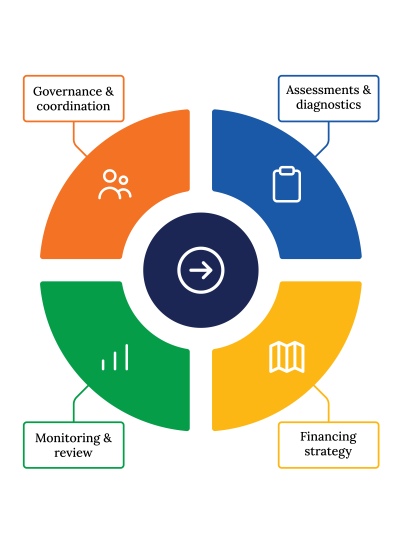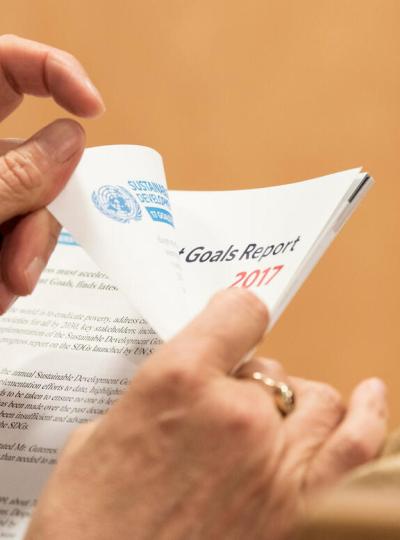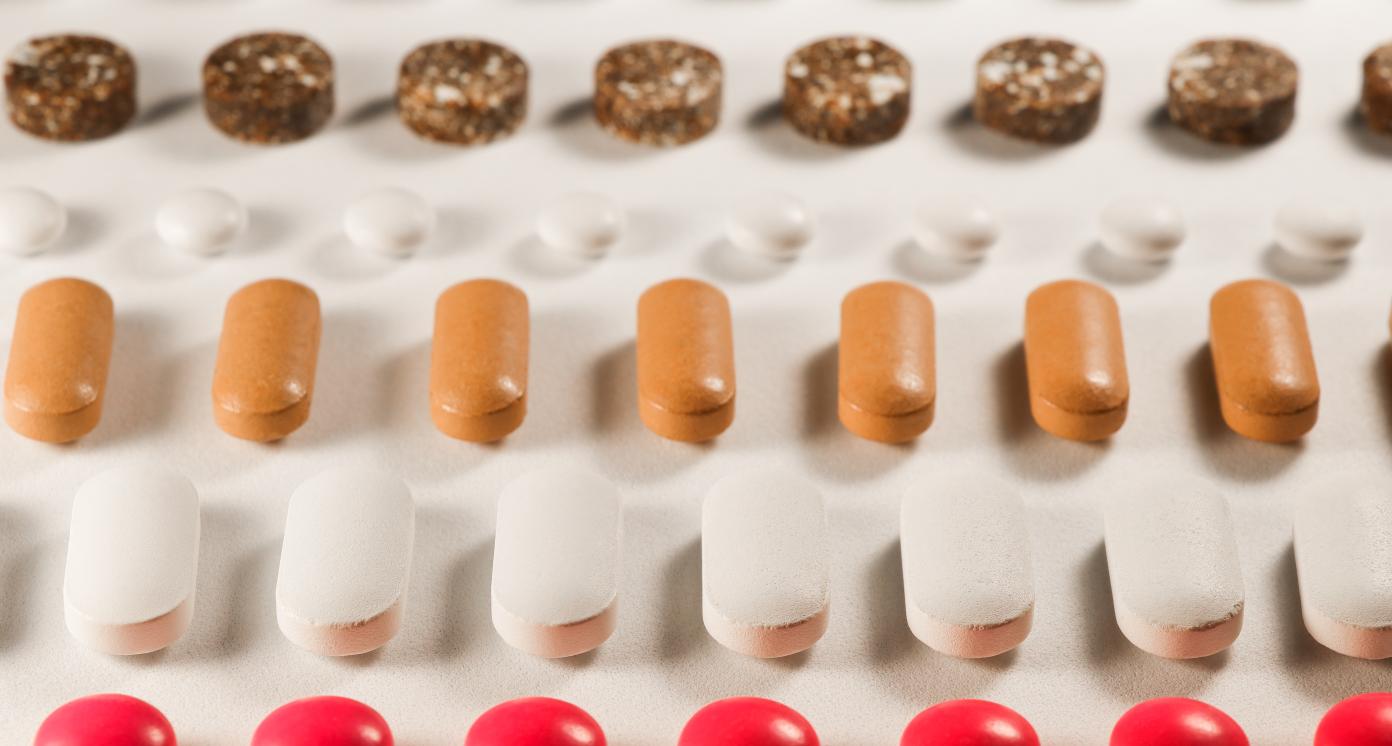Pharmaceutical Production
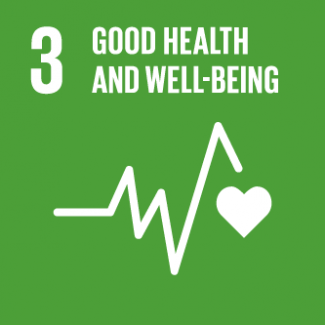
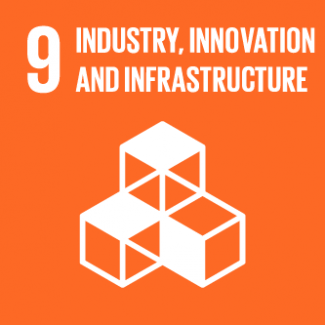
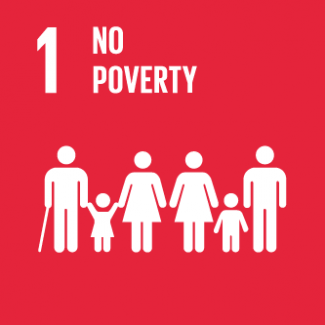
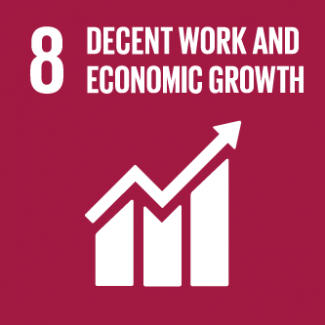
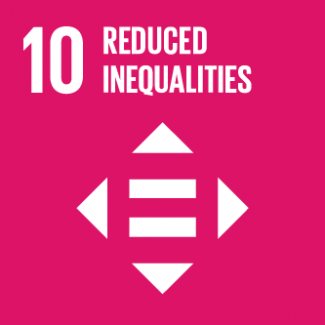
Business Model Description
Manufacture pharmaceutical products in solid, semi-solid, liquid and other dosage forms, especially antimalarial and AIDS prevention and treatments. These can be marketed nationally or exported in the sub-region drawing upon provisions of the African Continental Free Trade Area (AfCFTA).
Expected Impact
Lower costs and improve access to essential treatments, particularly for rural populations, controlling the spread of epidemics and strengthening public health resilience, and resulting in job creation.
How is this information gathered?
Investment opportunities with potential to contribute to sustainable development are based on country-level SDG Investor Maps.
Disclaimer
UNDP, the Private Finance for the SDGs, and their affiliates (collectively “UNDP”) do not seek or solicit investment for programmes, projects, or opportunities described on this site (collectively “Programmes”) or any other Programmes, and nothing on this page should constitute a solicitation for investment. The actors listed on this site are not partners of UNDP, and their inclusion should not be construed as an endorsement or recommendation by UNDP for any relationship or investment.
The descriptions on this page are provided for informational purposes only. Only companies and enterprises that appear under the case study tab have been validated and vetted through UNDP programmes such as the Growth Stage Impact Ventures (GSIV), Business Call to Action (BCtA), or through other UN agencies. Even then, under no circumstances should their appearance on this website be construed as an endorsement for any relationship or investment. UNDP assumes no liability for investment losses directly or indirectly resulting from recommendations made, implied, or inferred by its research. Likewise, UNDP assumes no claim to investment gains directly or indirectly resulting from trading profits, investment management, or advisory fees obtained by following investment recommendations made, implied, or inferred by its research.
Investment involves risk, and all investments should be made with the supervision of a professional investment manager or advisor. The materials on the website are not an offer to sell or a solicitation of an offer to buy any investment, security, or commodity, nor shall any security be offered or sold to any person, in any jurisdiction in which such offer would be unlawful under the securities laws of such jurisdiction.
Country & Regions
- Côte d'Ivoire: District Autonome d'Abidjan
- Côte d'Ivoire: Bas-Sassandra
- Côte d'Ivoire: District Autonome de Yamoussoukro
Sector Classification
Health Care
Development need
Côte d'Ivoire is struck by several epidemics, including malaria, tuberculosis, and AIDS, resulting in a high child (below 5) mortality of 74 per 1000. The Universal health coverage (UHC) remains inoperant in several areas, as the UHC card usage rate was 7.96% in 2023 (1, 12, 13).
Policy priority
Aligned with the National Development Plan (2021-2025), the National Health Development Plan (PNDS) aims to halve infant and maternal mortality rates and increase the average life expectancy from 57 to 62 years by 2025. It plans to meet its objectives by building 376 new health establishments, including university hospitals and regional health centers, and rehabilitating existing facilities (2, 8, 11).
Gender inequalities and marginalization issues
Certain diseases, such as AIDS, disproportionately affect young women and female teenagers, increasing the risk of transmission to children. In Côte d'Ivoire, young women aged 15-24 are nearly twice as likely to be living with HIV compared to their male counterparts, with 2.7% of young women affected versus 1.4% of young men. The cost of health services and medicines impedes the treatment of vulnerable populations (3, 6).
Investment opportunities introduction
Côte d'Ivoire imports over 90% of its pharmaceutical consumption, indicating high potential for a domestic industry. In addition, the roll-out of the Universal Health Insurance and pledged increase in government health expenditures would lead to increased health affordability, thereby expanding the market (7, 12).
Key bottlenecks introduction
The governance of the health system faces challenges due to fragmented efforts and overlapping responsibilities across various levels. Additionally, limited enforcement of legislation can sometimes lead to inefficiencies (11).
Biotechnology and Pharmaceuticals
Development need
Côte d'Ivoire's demand for pharmaceutical products represents a third of the ECOWAS's region and grew by 11.4% in 2023. However, medications are priced higher than international levels, resulting in limited access, with only 1 in 2 Ivorians having access to the pharmacy network (5, 10).
Policy priority
The National Health Development Plan aims to increase local pharmaceutical manufacturing, targeting 100 million euros (USD 108 million), to reduce dependency on imports, enhance regulatory frameworks to ensure the quality and safety of medicines, and improve the supply chain to ensure efficient distribution of essential drugs (2, 9).
Gender inequalities and marginalization issues
The PNDS 2021-2025 provides a policy of targeted free healthcare for pregnant women and children under the age of five. However, empirical evidence suggests that households are still the main source of funding for healthcare, exacerbating inequalities in access to pharmaceuticals (7).
Investment opportunities introduction
Although Côte d'Ivoire has several pharmaceutical manufacturing facilities, their capacity falls short of meeting growing demand and market expansion, leading to an annual pharmaceutical trade deficit of USD 1.6 million. The government's ambition is to increase national drug coverage from 6% to 30% by 2030 (10).
Key bottlenecks introduction
Pharmaceutical manufacturing in Côte d'Ivoire faces challenges such as regulatory delays, supply chain inefficiencies, and a deficit of qualified health workers, with only 0.78 providers per 1,000 inhabitants. The input supply chain managed by the state is fragmented, leading to frequent stock-outs and a lengthening of transport. In addition, the sector is vulnerable in supply chain disruptions impacting imports of active pharmaceutical ingredients (4).
Biotechnology and Pharmaceuticals
Pipeline Opportunity
Pharmaceutical Production
Manufacture pharmaceutical products in solid, semi-solid, liquid and other dosage forms, especially antimalarial and AIDS prevention and treatments. These can be marketed nationally or exported in the sub-region drawing upon provisions of the African Continental Free Trade Area (AfCFTA).
Business Case
Market Size and Environment
USD 100 million - USD 1 billion
10% - 15%
The market for pharmaceuticals in Côte d'Ivoire was estimated to be about USD 600 million in 2023, growing by more than 11% year-on-year. 90% of the consumed pharmaceuticals are imported (10).
Indicative Return
10% - 15%
Equity placements in the impact investing landscape in West African region imply that domestic pharmaceutical manufacturing would generate at least 12% in IRR (50).
Investment Timeframe
Short Term (0–5 years)
Pharmaceutical production is a capital-extensive industry, with payback periods over 5 years for companies designing their own technology platforms and engaging in research and development. However, companies producing generics have lower levels of investment and exhibit shorter payback periods (51, 52, 53).
Ticket Size
> USD 10 million
Market Risks & Scale Obstacles
Market - Highly Regulated
Capital - CapEx Intensive
Impact Case
Sustainable Development Need
Over 90% of pharmaceutical products consumed in Côte d'Ivoire are imported. This creates vulnerabilities in supply chains, leading to potential shortages of essential medicines during crises. This dependence also makes pharmaceutical products more expensive for consumers (10).
Only 50% of the population has access to pharmacy networks, notably due to the price of pharmaceuticals, which are higher than international reference prices (10).
The government has identified priority disease groups with epidemic potential or key zoonotic diseases, which include Mycobacterium tuberculosis, brucellosis, rabies, viral haemorrhagic fevers such as Ebola and Marburg, and respiratory illnesses such as highly pathogenic avian influenza. As a result, the population has a strong need for preventive and therapeutic medicines (42).
Gender & Marginalisation
Epidemics struck more severely rural communities. Tuberculosis, for instance, is more prevalent in Northern regions and Abidjan has the lowest prevalence rate. Other epidemics such as AIDS affect young women over twice as much as young men (2.7% versus 1.2%) (2, 6).
Noncommunicable diseases (NDCs) represented 36% of deaths in 2019, mainly affecting vulnerable populations. NDCs such as diabetes, cardiovascular diseases, and cancers, require continuous treatment, often involving long-term medication regimens, and dependence on imported medications creates cost barriers (43).
Expected Development Outcome
Increasing local production can improve the availability of medicines and guarantee their quality through enhanced monitoring (47).
Increasing the supply of generic drugs would bring down costs by avoiding import-related expenses and improving supply chain reliability, thereby benefiting the population at large, and particularly poorer patients (47).
Increased local production of medicines means that epidemics can be treated more effectively, and their spread slowed or prevented (19, 48).
Gender & Marginalisation
The availability of medicines enhances access to treatment, especially for vulnerable populations, and supports the prevention and management of epidemics, including AIDS (54).
Local pharmaceutical production ensures stable supply of treatments for noncommunicable diseases (NCDs) like diabetes, cardiovascular diseases, and cancers, which are provided on a long-term basis. Due to the nature of these diseases, regular long-term supply appears crucial for the patients.
Primary SDGs addressed

3.8.1 Coverage of essential health services
3.b.3 Proportion of health facilities that have a core set of relevant essential medicines available and affordable on a sustainable basis
The universal health coverage service index for Côte d'Ivoire was 41% in 2019 (16).
In 2020, the tracer drug availability at the national level was 67.4%. Tracer products are key medical supplies selected to monitor and reflect the broader availability and reliability of essential medicines within the healthcare system (2).
The National Health Development Plan 2021-2025 aims to increase the number of health centers and clinics covered by the Universal Health Coverage to 80% by 2025 (2).
The National Health Development Plan sets the target to increase the availability rate of tracer products at the central purchasing office to 85% by 2025 (2).

9.2.1 Manufacturing value added as a proportion of GDP and per capita
In 2021, the industrial sector's share of GDP amounted to 21.2%, and manufacturing value added represented 14.2% of GDP (17, 55).
The National Development Plan 2021-2025 sets the target to increase the industrial sector's share of GDP from 21.2% in 2019 to 28% by 2025 (11, 55).
Secondary SDGs addressed



Directly impacted stakeholders
People
Gender inequality and/or marginalization
Corporates
Public sector
Indirectly impacted stakeholders
People
Gender inequality and/or marginalization
Corporates
Outcome Risks
Without a system for monitoring the quality of medicines, there is a risk that less effective or potentially dangerous medicines will be placed on the market, posing a threat to public health.
Improper disposal of pharmaceutical waste or byproducts could lead to environmental harm, such as contamination of local water sources, causing unintended negative consequences for both communities and ecosystems. Manufacturing medicines requires vast quantities of solvent (80-90% of the product's mass), which cause damages to the ecosystems if discharged improperly (56).
The establishment of local pharmaceutical production facilities may have a negative environmental impact due to high energy consumption (56).
Instances of low-quality or unsafe medicines could erode public confidence in locally produced pharmaceuticals, reducing demand and undermining public health efforts.
Impact Risks
A lack of skilled personnel to operate and maintain high-quality pharmaceutical production may hamper productivity and lead to lower product quality and difficulties in reaching output targets.
Disruptions in the supply chain due to global supply shortages or local logistical challenges can affect the stability of production and alter the population's access to medicines.
Limited access to essential patents or advanced technologies could limit the types of medicines that local producers can manufacture, leading to a restricted range of products (57).
Gender inequality and/or marginalization risk: If locally produced pharmaceuticals are not distributed equitably, particularly in underserved areas, the most vulnerable populations may not benefit from improved access to medicines.
Impact Classification
What
Investments in local pharmaceutical production facilities would result in increased availability of medicines at a cheaper price and reduced dependency on imports.
Who
The entire population, particularly the most vulnerable segments exposed to AIDS and malaria, with a high price-elasticity of demand for drugs.
Risk
Operational challenges and supply chain disruptions in pharmaceutical production could hinder healthcare improvements and market growth by delaying plant construction, compromising quality, and limiting product delivery.
Contribution
Pharmaceutical production replaces imports, which may prove more costly and expose the country to trade shocks.
How Much
Côte d'Ivoire aims to strengthen its local pharmaceutical production to meet 20% of national demand by 2025 and 30% by 2030, against less than 10% currently (9).
Impact Thesis
Lower costs and improve access to essential treatments, particularly for rural populations, controlling the spread of epidemics and strengthening public health resilience, and resulting in job creation.
Enabling Environment
Policy Environment
The National Health Development Plan 2021-2025 outlines initiatives to improve health and reduce maternal and infant mortality. These include building a domestic pharmaceutical sector to expand the coverage of national medication needs from 6 to 12%. 14 industrial units producing generic drugs, phytomedicines, and cosmetics are being established (2).
The National Development Plan 2021-2025 outlines the government's health strategy, with pharmaceutical industry highlighted as a priority sector. In addition, it aims to help improve access to essential medicines and presents ongoing reforms in the health sector, including the creation of the Ivorian Pharmaceutical Regulatory Authority (AIRP) (11).
The National Strategic Plan for the Integration and Development of the Private Health Sector 2021-2025 (Plan Stratégique National d'Intégration et de Développement du Secteur Privé de la Santé or PSN-IDSP) aims to improve the healthcare system in Côte d'Ivoire, notably by improving access to healthcare services and promoting public-private partnerships. Increasing local pharmaceutical production is a key objective to improve accessibility of quality medicines (31).
Côte d'Ivoire's National Pharmaceutical Policy (2023): aims to enhance the availability, geographical reach, and financial accessibility of high-quality essential medicines, vaccines, and other key health interventions for the entire population of Côte d'Ivoire (38).
Financial Environment
Fiscal incentives: The 2018 Investment Code considers health as a priority (Category 1) sector. This designation allows investors to benefit from partial or total exemptions from corporate tax for a period of 5 to 15 years, partial exemptions from customs duties, exemptions or suspensions of VAT, and the provision of tax credits (39).
Other incentives: In 2020, the European Investment Bank launched a 50 million euros (USD 54 million) fund to support the establishment of pharmaceutical production units in Africa (18).
Other incentives: Multilaterals offer various financing mechanisms for the private sector. For instance, the International Finance Corporation announced a 50 million euro (USD 54 million) financing package to support group Fosun in the construction of the country's largest pharmaceutical production plant (9, 32).
Regulatory Environment
Decree No. 2013-792 requires public primary care establishments in Côte d'Ivoire to source all medicines through the state-controlled Nouvelle Pharmacie de Santé Publique. It aims to centralize the procurement and distribution of medicines and strategic inputs to ensure accessibility (10, 27).
Pharmaceutical supplies are regulated by Law No. 2015-533 of 20 July 2015, which outlines provisions for import, export, re-export and removal. It enshrines the pharmacist's monopoly (unless otherwise provided by law) on activities related to medicines and other health products (23).
Loi no 2019-677 "guiding public health policy in Côte d'Ivoire" acts as a new public health code. Article 19 stresses the importance of the availability and affordability of essential medicines, Article 20 delineates prescription standards and Article 22 mandates strict quality control of pharmaceuticals (28, 29).
Loi no 2019-677 "guiding public health policy in Côte d'Ivoire": reinstates the principle of establishing, by decree, a list of essential medicines, to be updated every 2 years. This measures aims to ensure their supply and availability in public health services (28, 38).
Law No. 2017-541 "relative à la régulation du secteur pharmaceutique" enforces measures aimed at ensuring the safety, quality, and accessibility of medicines. The law mandates that all pharmaceutical establishments, including manufacturers and importers, must receive prior authorization from the Ivorian Pharmaceutical Regulatory Authority (AIRP) (30).
Marketplace Participants
Private Sector
Tridem Pharma, Cipharm, Pfizer, Sanofi, Novartis, Pharma 5, Confédération Générale des Entreprises de Côte d’Ivoire (CGECI), Shanghai Fosun Pharmaceutical, Royax Medical Solution, OLEA Lab.
Government
Centre de Promotion des Investissements en Côte d’Ivoire (CEPICI), Ministry of Health and Public Hygiene, Ministry of Economy, Ministry of the Economy, Planning and Development, Direction de la Pharmacie, du Médicament et des Laboratoires, Nouvelle Pharmacie de Santé Publique, Ivorian Pharmaceutical Regulatory Authority (AIRP).
Multilaterals
International Finance Corporation (IFC), United Nations Development Programme (UNDP), Joint United Nations Programme on HIV/AIDS (UNAIDS), World Bank, World Health Organization (WHO), European Investment Bank (EIB).
Non-Profit
Fondation Mérieux, PATH, Médecins sans frontières, Jhpiego, Elizabeth Glaser Pediatric AIDS Foundation, Clinton Health Access Initiatives.
Target Locations
Côte d'Ivoire: District Autonome d'Abidjan
Côte d'Ivoire: Bas-Sassandra
Côte d'Ivoire: District Autonome de Yamoussoukro
References
- (1) Ministry of Planning and Development. 2022. Deuxième Rapport National Volontaire de la Côte d'Ivoire. https://hlpf.un.org/sites/default/files/vnrs/2022/VNR%202022%20Cote%20dIvoire%20Report_0.pdf
- (2) UCP-Santé. 2020. Plan National de Développement Sanitaire 2021-2025. https://www.ucpsante-bm.org/index.php?option=com_content&view=article&id=64&catid=73&Itemid=302&lang=fr#:~:text=%C3%A0%20l%27horizon%202025%2C%20il,une%20approche%20des%20P%C3%B4les%20de
- (3) UNAID. 2021. Cinq questions sur la riposte au VIH en Côte d’Ivoire. https://www.unaids.org/fr/keywords/cote-divoire#:~:text=La%20C%C3%B4te%20d%27Ivoire%20a,baiss%C3%A9%20de%20plus%20de%20moiti%C3%A9.
- (4) Global Financing Facility. 2020. Financement de la santé - Dossier d'investissement 2020-2023. https://www.globalfinancingfacility.org/sites/gff_new/files/documents/Cote-dIvoire-Investment-Case_Resume-fr.pdf
- (5) Remed. 2016. Production pharmaceutique en Afrique subsaharienne : Ex UEMOA - Opportunités et défis. https://remed.org/wp-content/uploads/2016/10/Production-pharmaceutique-Uemoa-opportunites-defis-SARR.pdf
- (6) UNAIDS. 2023. Une évaluation des enveloppes pays de l'ONUSIDA. 2018-2022. Etude de cas pays - Côte d'Ivoire. https://www.unaids.org/sites/default/files/media/documents/evaluation-country-envelopes-2018-2022-case-study-cotedivoire_fr.pdf
- (7) Sciences Po. 2024. Le droit à la santé en Côte d'Ivoire. https://www.sciencespo.fr/ecole-droit/sites/sciencespo.fr.ecole-droit/files/Rapport_sante_SCPO&HumanDignity.pdf
- (8) WHO. 2022. Rapport biennal 2020-2021. OMS Côte d'Ivoire. https://www.afro.who.int/sites/default/files/2022-07/exe%20RA%20Biennal%20OMS%2007%20juillet%20print.pdf
- (9) Team France Export. 2023. Côte d'Ivoire : objectif de 20% de couverture pharmaceutique nationale d'ici 2025. https://www.teamfrance-export.fr/infos-sectorielles/25560/25560-cote-divoire-objectif-de-20-de-couverture-pharmaceutique-nationale-dici-2025
- (10) Team France Export. 2024. Le Marché des médicaments et biotechs en Côte-d'Ivoire. https://www.teamfrance-export.fr/fiche-marche/sante/medicaments-et-biotechs/CI
- (11) Gouvernement de la Côte d'Ivoire. 2021. Plan National de Développement PND 2021-2025. https://dcf.ci/dcf.ci/wp-content/uploads/2021/09/PND-2021-2025_Tome-1_Diagnostic-strate%CC%81gique.pdf
- (12) WHO. 2024. Vers le renforcement d’un appui concerté et optimisé des partenaires techniques et financiers dans la mise en œuvre de la CMU en Côte d’Ivoire. https://www.afro.who.int/fr/countries/cote-divoire/news/vers-le-renforcement-dun-appui-concerte-et-optimise-des-partenaires-techniques-et-financiers-dans-la
- (13) Ministère de l'Economie, du Plan et du Développement. 2023. Plan National de Développement 2021-2025. Rapport Annuel 2023.
- (14) Cipharm. [homepage]. Produits. https://www.cipharm.ci/produits/
- (15) RTI. 2023. Une nouvelle usine de production pharmaceutique va bientôt s’implanter en Côte d’Ivoire. https://www.rti.info/sante/2023/1/17/une-nouvelle-usine-de-production-pharmaceutique-va-bientot-simplanter-en-cote-divoire
- (16) World Bank. [Undated]. SDG 3.8.1 Coverage of essential health services. https://databank.worldbank.org/embed/SDG-3.8.1-Coverage-of-essential-health-services/id/f609d4b
- (17) UNIDO. 2024. Sustainable Development Goal 9. https://stat.unido.org/analytical-tools/sdg?tab=charts&country=250
- (18) EIB. 2020. La BEI lance une initiative dotée de 50 millions d’EUR à l’appui de la production pharmaceutique en Afrique. https://www.eib.org/fr/press/all/2020-377-eib-launches-eur-50-million-africa-pharmaceutical-manufacturing-initiative
- (19) WHO. 2021. Renforcer la production locale de médicaments et d’autres technologies sanitaires pour en améliorer l’accès. https://apps.who.int/gb/ebwha/pdf_files/WHA74/A74_R6-fr.pdf
- (20) Deloitte. 2024. Measuring the return from pharmaceutical innovation – 14th edition. https://www2.deloitte.com/content/dam/Deloitte/us/Documents/life-sciences-health-care/us-rd-roi-14th-edition.pdf
- (21) Zones Industrielles de Côte d'Ivoire. ZONES INDUSTRIELLES DE SAN-PÉDRO. https://zi-civ.com/zic-san-pedro-fr/
- (22) Jeune Afrique. 2016. Le marocain Pharma 5 va produire des médicaments en Côte d’Ivoire. https://www.jeuneafrique.com/359463/economie-entreprises/pharma-5-construit-usine-de-medicaments-cote-divoire/
- (23) GiZ. [undated]. Patnership Ready - Côte d'Ivoire - Le secteur de la santé. https://www.giz.de/en/downloads/gbn-fr-sante-cote.pdf
- (24) @Bidj@n.net. 2024. Les investisseurs invités à saisir les opportunités d’investissement dans les régions de San Pedro et du Gboklê. https://news.abidjan.net/articles/734605/les-investisseurs-invites-a-saisir-les-opportunites-dinvestissement-dans-les-regions-de-san-pedro-et-du-gbokle
- (25) Afrique La tribune. 2017. Le groupe marocain Pharma 5 pose un pied en Côte d'Ivoire. https://afrique.latribune.fr/entreprises/industrie/chimie-pharma/2017-12-28/le-groupe-marocain-pharma-5-pose-un-pied-en-cote-d-ivoire-763071.html
- (26) Gazette Labo Info. 2015. Côte d’Ivoire : Le Laboratoire OLEA fête ses 10 ans. https://www.gazettelabo.info/archives/M101/page%209.pdf
- (27) Présidence de la République. 2013. DECRET n° 2013-792 du 20 Novembre 2013 portant approbation de la convention entre l'Etat et la Nouvelle Pharmacie de la Santé publique de Côte d'Ivoire relative à l'approvisionnement et à la distribution de médicaments essentiels et intrants stratégiques de laboratoire. https://www.juriafrica.com/lex/decret-2013-792-20-novembre-2013-30957.htm
- (28) République de Côte d'Ivoire. 2019. Loi No. 2019-677 du 23 juillet 2019 portant orientation de la politique de santé publique de Côte d'Ivoire. https://www.sante.gouv.ci/assets/fichiers/loi-n-2019-677-du-23-juillet-2019-portant-orientation-de-la-poliotique-de-sante-publique-en-ci.pdf
- (29) Gouvernement de Côte d'Ivoire. 2018. RENFORCEMENT DU SYSTEME SANITAIRE : LA COTE D’IVOIRE LANCE UN NOUVEAU CODE. https://www.gouv.ci/_actualite-article.php?recordID=8501#:~:text=%C2%AB%20Ce%20nouveau%20code%20de%20la,a%20d%C3%A9clar%C3%A9%20Raymonde%20Goudou%20Coffie.
- (30) République de Côte d'Ivoire. 2017. LOI n° 2017-541 du 3 aout 20/ 7 relative à la régulation du secteur pharmaceutique. https://faolex.fao.org/docs/pdf/IVC187369.pdf
- (31) République de Côte d'Ivoire. 2021. Plan Stratégique National d'Intégration et de Développement du Secteur Privé de la Santé en Côte d'Ivoire 2021-2025. https://www.depps.sante.gouv.ci/DocPDF/DOCUMENTS%20DE%20R%C3%89F%C3%89RENCE/PLAN%20STRATEGIQUE%20NATIONAL%20IDSPS.pdf
- (32) IFC. 2023. IFC soutient Fosun Pharma dans la construction de la plus grande usine de produits pharmaceutiques en Côte d’Ivoire. https://www.ifc.org/fr/pressroom/2023/27587#:~:text=Press%20Release-,IFC%20soutient%20Fosun%20Pharma%20dans%20la%20construction%20de%20la%20plus,pharmaceutiques%20en%20C%C3%B4te%20d%27Ivoire&text=Abidjan%2C%20C%C3%B4te%20d%27Ivoire%2C,Fosun%20Pharmaceutical%20(Group)%20Co.
- (33) Team France Export. 2021. La Côte d’Ivoire va accueillir une unité de production pharmaceutique de plus de 75,6 millions EUR. https://www.teamfrance-export.fr/infos-sectorielles/12062/12062-la-cote-divoire-va-accueillir-une-unite-de-production-pharmaceutique-de-plus-de-756-millions-eur
- (34) Agence Ecofin. 2023. Côte d’Ivoire : la SFI mobilise 54 millions $ pour une usine et un centre de distribution de produits pharmaceutiques. https://www.agenceecofin.com/home/0706-109051-cote-d-ivoire-la-sfi-mobilise-54-millions-pour-une-usine-et-un-centre-de-distribution-de-produits-pharmaceutiques
- (35) McKinsey & Company. 2019. Should sub-Saharan Africa make its own drugs? https://www.mckinsey.com/industries/public-sector/our-insights/should-sub-saharan-africa-make-its-own-drugs
- (36) UNIDO. 2019. Pharmaceutical Industry in Sub-Saharan Africa - a Guide for Promoting Pharmaceutical Production in Africa. https://www.unido.org/sites/default/files/files/2019-10/PHARMACEUTICAL_INDUSTRY_IN_SUB-SAHARAN_AFRICA_Guide_Book.pdf
- (37) Future Africa Forum. 2022. The African Pharmaceutical Manufacturing Industry: Opportunities and challenges for growth. https://forum.futureafrica.com/the-african-pharmaceutical-manufacturing-industry-opportunities-and-challenges-for-growth/
- (38) République de Côte d'Ivoire. 2023. Politique Pharmaceutique Nationale. https://dap.ci/wp-content/uploads/2023/11/PPN-Version-02.10.2023-DAP.pdf
- (39) Présidence de la République. 2018. Ordonnance No. 2018-646 du 1er août 2018 portant code des investissements. https://tourisme.gouv.ci/uploads/Ordonnance-2018-646-du-01-08-2018code-investissement.pdf.pdf
- (40) Portail officiel du gouvernement de Côte d'Ivoire. 2023. Santé/Fabrication locale de médicaments : la Côte d'Ivoire vers l'implantation d'une nouvelle unité de production. https://www.gouv.ci/_actualite-article.php?recordID=14582&d=1
- (41) Oxford Business Group. 2020. The impact of Côte d'Ivoire's universal health coverage. https://oxfordbusinessgroup.com/reports/cote-divoire/2020-report/economy/expanded-access-universal-coverage-is-rolled-out-alongside-facility-upgrades
- (42) One Health Behaviors. 2024. Côte d'Ivoire - Profil du Pays. https://onehealthbehaviors.org/fr/countries/cote-divoire/#:~:text=A%20travers%20cette%20initiative%2C%20le,et%20maladies%20respiratoires%20telles%20que
- (43) WHO. 2023. Country Disease Outlook - Côte d’Ivoire. https://www.afro.who.int/sites/default/files/2023-08/CIV.pdf
- (44) AIVP. 2023. Port Autonome de San Pedro. https://www.aivp.org/aivp/nos-adherents-et-nous/annuaire/port-autonome-de-san-pedro/#:~:text=Le%20Port%20Autonome%20de%20San,de%20cacao%20et%20de%20bois.
- (45) IOM. 2023. National study of the labour market in Côte d'Ivoire. https://publications.iom.int/system/files/pdf/pub2023-003-el-natl-study-labour-market.pdf
- (46) FratMat. 2023. District du Goh-Djiboua : Le ministre-gouverneur veut faire de l’énergie solaire une réalité. https://www.fratmat.info/article/230006/culture/district-du-goh-djiboua-le-ministre-gouverneur-veut-faire-de-lenergie-solaire-une-realite
- (47) Coulibarly, A. and A. Toumi. 2014. Etude pour le développement des industries pharmaceutiques locales (IPL) en Côte d'Ivoire. https://remed.org/wp-content/uploads/2017/02/Etude_Industrie_Pharmaceutique2014.pdf
- (48) UNAIDS. 2017. Croire en la pharmacie africaine. https://www.unaids.org/fr/resources/presscentre/featurestories/2017/march/20170329_CIPHARM
- (49) International Finance Corporation (IFC). 2023. IFC Project Information and Data Portal: Tridem Africa. https://disclosures.ifc.org/project-detail/SII/47180/tridem-africa
- (50) The Global Impact Investing Network (GIIN) and Dalberg Global Development Advisors. 2015. The Landscape for Impact Investing in West Africa. https://dalberg.com/wp-content/uploads/2015/12/160620_GIIN_THE-LANDSCAPE-FOR-IMPACT-INVESTING-IN-WEST-AFRICA.pdf
- (51) McKinsey&Company. 2010. Outlook on pharma operations. https://www.mckinsey.com/~/media/mckinsey/dotcom/client_service/operations/pdfs/outlook_on_pharma_operations.ashx
- (52) Laichapis, M. et al. 2024. Financial Feasibility Study and policy recommendations of Incremental Modified Drugs Development by the Domestic Pharmaceutical Industry. https://www.medrxiv.org/content/10.1101/2024.07.29.24311184v1.full.pdf
- (53) Wosińska, M. E. et al. 2023. TECHNOLOGY SOLUTIONS FOR IMPROVING THE RESILIENCE OF GENERIC PRESCRIPTION DRUG MANUFACTURING. https://www.brookings.edu/wp-content/uploads/2023/12/20240110_CHP_Wosinska_WSSummary.pdf
- (54) ONUSIDA. 2014. La CEDEAO et ses partenaires veulent booster la production locale de médicaments de qualité. https://www.unaids.org/fr/resources/presscentre/featurestories/2014/may/20140501ecowas
- (55) Oxford Business Group. 2022. How is Côte d’Ivoire targeting sustainable economic transformation. https://oxfordbusinessgroup.com/reports/cote-divoire/2022-report/economy/stepping-stones-building-on-previous-strategies-the-national-development-plan-2021-25-sets-its-sights-on-sustainable-economic-transformation
- (56) Bartolo, N. S. 2021. Pharmaceuticals and the environment. https://www.sciencedirect.com/science/article/pii/S0378378220307027
- (57) Motari, M. et al. 2021. The role of intellectual property rights on access to medicines in the WHO African region: 25 years after the TRIPS agreement. https://bmcpublichealth.biomedcentral.com/articles/10.1186/s12889-021-10374-y
- (58) Capmad. 2024. Côte-d’Ivoire : Advancing Progress through Road Infrastructure. https://www.capmad.com/case-studies/investment-en/cote-divoire-advancing-progress-through-road-infrastructure/












